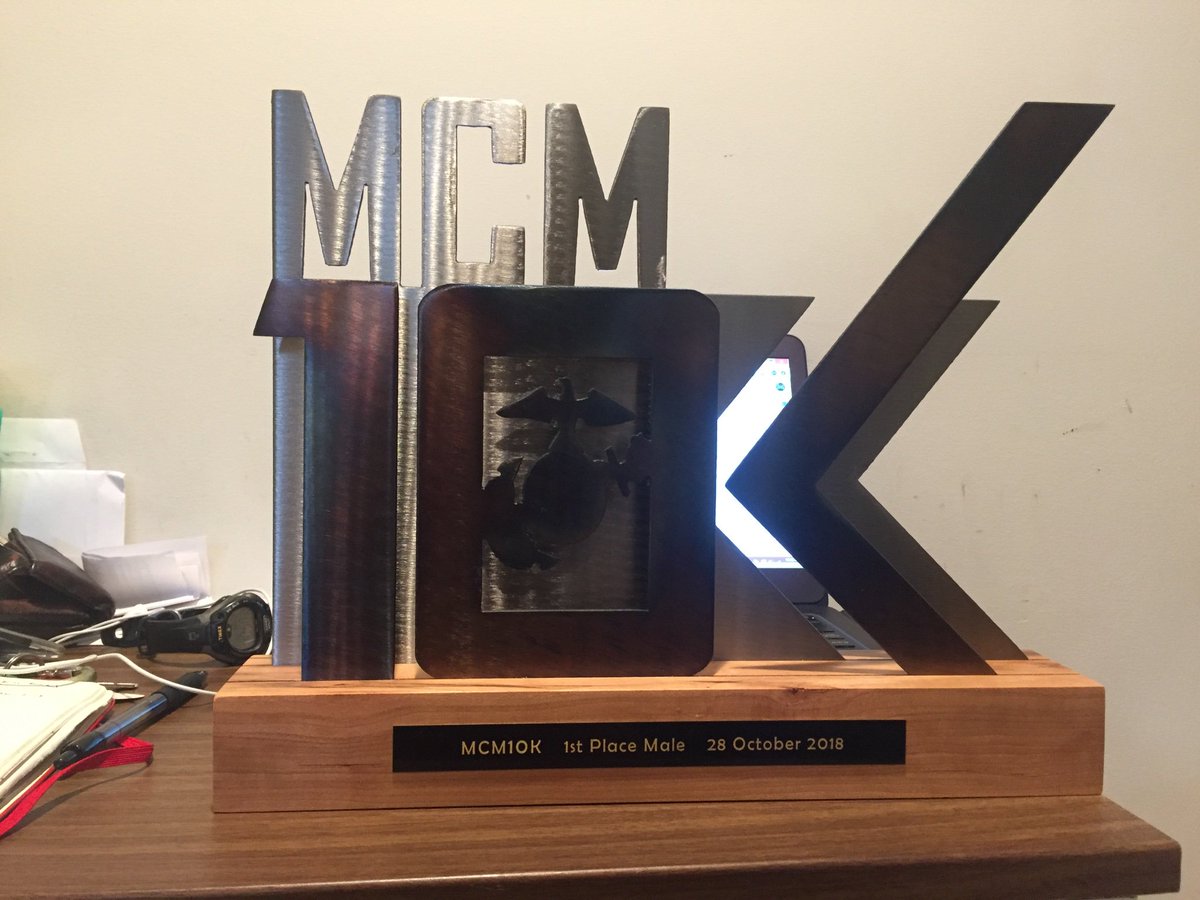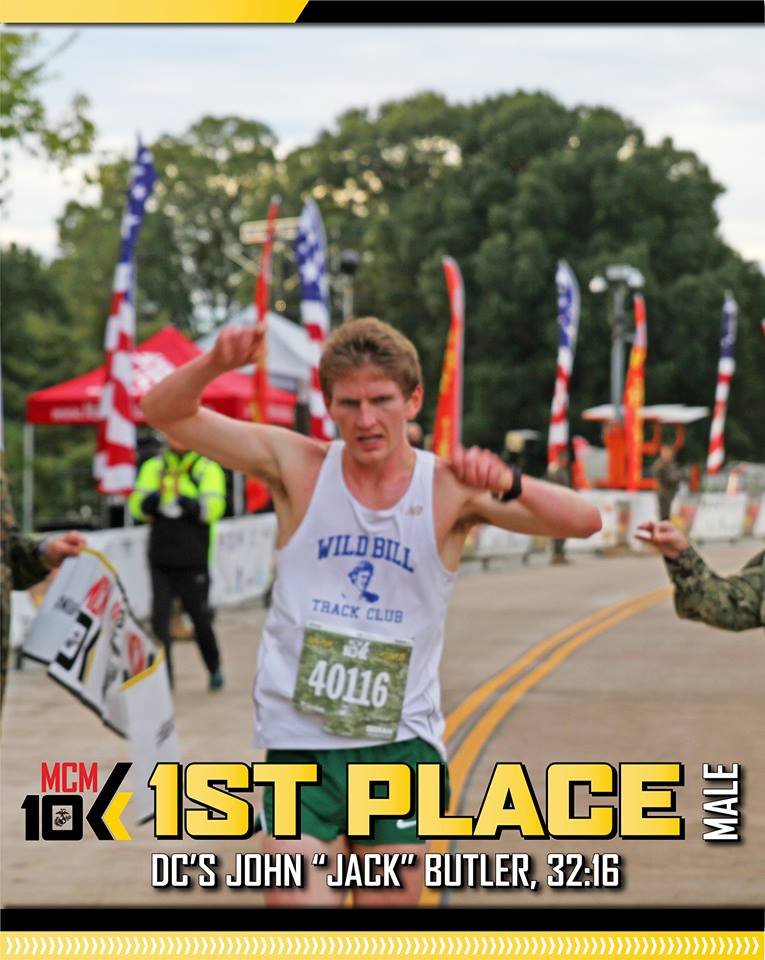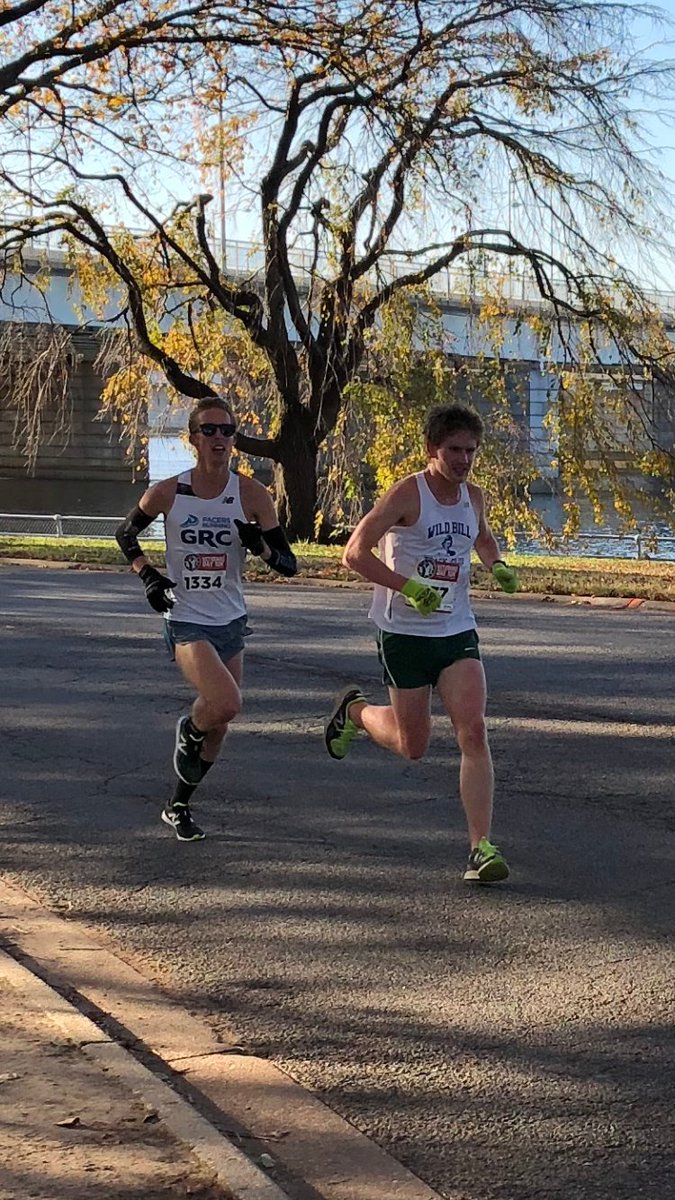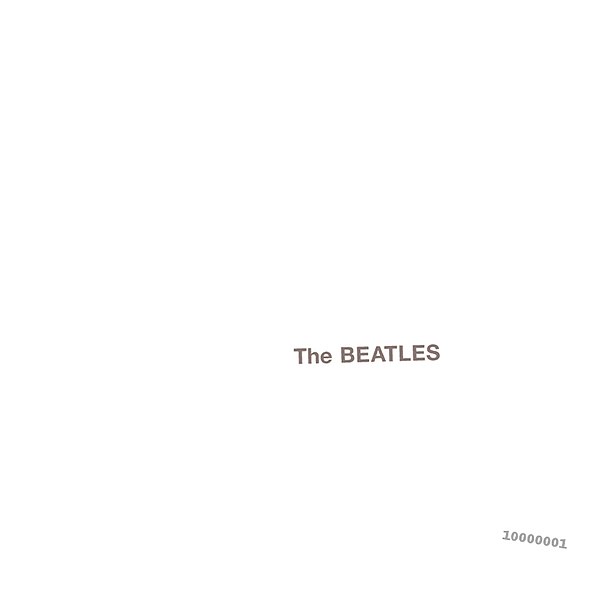 |
| Kingdom Hearts 3 |
[By Tim Broxterman:]
After 14 years, it’s hard to believe that Kingdom Hearts 3, which came out earlier this year, exists. It’s also hard to believe that Kingdom Hearts 3 is such a disappointment. This game single-handedly shook my faith in the series and made me question whether my fond memories of earlier games are simply nostalgia clouding my judgment.
The Kingdom Hearts games ate up countless hours of my childhood. The story of Sora, the protagonist, trying to reunite with his friends after setting off to discover new worlds always stuck with me. It was something I could relate to, and I constantly imagined myself in Sora’s position, venturing off into new places. That is the core of the Kingdom Hearts story, and it’s something that almost every kid has dreamed of before.
 |
| The game that started it all. |
Following Kingdom Hearts 2’s release in 2005, I immediately began anticipating the third (and supposedly final) game in the series. The sequel had improved significantly on the original. It took the gameplay of the first and added more to that basic foundation. The worlds were more interesting, combat was more interactive, and great new characters were added to the cast, such as Roxas and Axel. Seeing how much Kingdom Hearts 2 had improved on the original, I couldn’t wait to see what Kingdom Hearts 3 would be.
And then I heard…nothing. For years. Eventually, I started joking that Kingdom Hearts 3 was vaporware that would never see the light of day. When information about the game finally started to trickle out, I approached it cautiously. No game can live up to a 14-year wait. Because of this, I avoided as much information about the game as possible before its release date, and tried to go in blind. My expectations weren’t excessive, by any means. I merely wanted to see the conclusion to a beloved series from my childhood. Yet even with those tempered expectations, the game falls short of what past games had achieved.
 |
| Past games like Kingdom Hearts 2 |
From a technical gameplay standpoint, Kingdom Hearts 3 is merely average. Let’s start with the combat, which forms much of the active gameplay. Most combat encounters boil down to mashing the attack button and occasionally activating the second form of your keyblade (a sword-like weapon shaped like a key, Sora's main equipment) to win. There is no depth to the combat beyond that. While Sora’s combos are cinematic and exciting at first, by the end of the game, you’ll have seen them so often that they’ll lose all of their appeal. Yet the combat isn’t outright bad, as it at least works in the context of the game.
 |
| A generation's nightmare |
This game’s voice acting is about as uninspired as the combat system. None of the actors show any emotion, even during times of crisis. The characters are not properly expressive for the situation and never sound like they are feeling any sort of emotion. This is bizarre, because many of these voice actors had been expressive in the past. But their performances in this game sound stiff and apathetic. It’s almost like the voice actors completely forgot how to act in the 14-year gap between games.
Another complaint I have is that the worlds take much longer to complete than in past games. One of the most unique features of Kingdom Hearts games has been staging gameplay in levels largely based on Disney properties. This time around, the developers included fewer worlds than in past games, but made them significantly lengthier. At first, this doesn’t sound so bad. But the worlds would often overstay their welcome. Some took more than 90 minutes to complete. These worlds contain several boss fights that seem like they should be the end. But the world always finds some dull reason to trudge on. Some some are just complete rehashes of the movies, the most egregious offender being the world based on the movie Frozen. They recreate certain scenes shot-for-shot, just with game main characters Sora, Donald, and Goofy stumbling around in the background. I found myself wishing these worlds were over about halfway through the experience, and hoping that the next one would be more interesting.
Another complaint I have is that the worlds take much longer to complete than in past games. One of the most unique features of Kingdom Hearts games has been staging gameplay in levels largely based on Disney properties. This time around, the developers included fewer worlds than in past games, but made them significantly lengthier. At first, this doesn’t sound so bad. But the worlds would often overstay their welcome. Some took more than 90 minutes to complete. These worlds contain several boss fights that seem like they should be the end. But the world always finds some dull reason to trudge on. Some some are just complete rehashes of the movies, the most egregious offender being the world based on the movie Frozen. They recreate certain scenes shot-for-shot, just with game main characters Sora, Donald, and Goofy stumbling around in the background. I found myself wishing these worlds were over about halfway through the experience, and hoping that the next one would be more interesting.
 |
| For example... |
Every complaint I have about Kingdom Hearts 3 pales in comparison to the worst offense of them all, though: the plot. The plot is incomprehensible garbage to everyone except for the people who wrote the series. To gain even a basic understanding of it requires immense effort from the player. You would have to buy numerous consoles just for Kingdom Hearts games, costing not only thousands of dollars, but also hundreds of hours. The developers initially envisioned Kingdom Hearts as a trilogy, but they stretched that out over nine games, and only added more depth and complexity to an already confusing plot. (Most confusing of all: How there can be nine games, yet the ninth is somehow only considered the third. Don’t ask.) Kingdom Hearts 3 doubles down on this convoluted story, expecting the player to have followed the releases as it frantically tries to wrap up the numerous plot threads (or at least those it decided not to retcon).
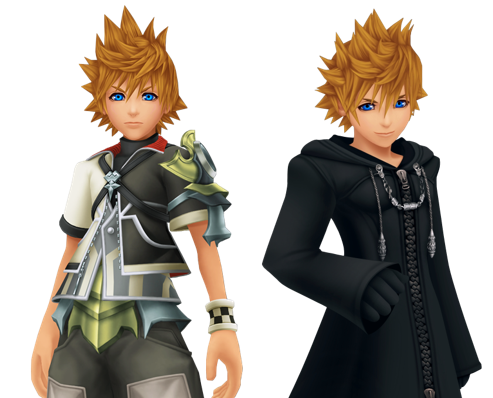 |
| For example: These two, who are not one person dressed differently, or twins, or brothers, but two completely different characters. |
When the story was confusing in past entries, it could at least fall back on the basic concept that Sora had set out on an adventure with his two closest friends and had been separated from them. That’s an almost universally relatable concept, and served as Sora’s primary motivation. The past games always did a great job of conveying that. Kingdom Hearts 3, however, is so busy trying to tie up loose ends that it never has time to dwell on Sora’s relationship with his friends. Riku, who had been one of Sora’s aforementioned long lost friends, actually plays a significant role for the entire story in this game. But you would never know that he and Sora are great friends unless you’ve played past games. Sora interacts with Riku the same way he would with a wet piece of cardboard. Their interactions are dull and lifeless, and there are no signs of a bond between the characters as they meet in passing between missions. To a newcomer, Riku would just be another character who for some reason pals with King Mickey--yes, Mickey Mouse is in this game; again, don’t ask--and always hangs out in the realm of darkness.
The poor writing is not limited to just Sora’s interactions with Riku, either. Sora as a character seems to be written in an entirely different fashion for Kingdom Hearts 3. In past games, he had his own personality. Sure, he could be cheesy, but he was also charming and likeable. In this game, he is--there is no better word for it--lame, and his character has very little depth. Most of his dialogue is stupid, and not in a funny or endearing way. Many of the unique aspects of his personality have been removed entirely. The majority of Sora’s character is just him getting depressed when villains tell him he isn’t good enough, only for him to be cheered up immediately by some encouraging words from Donald or Goofy. Then everything goes back to normal until they encounter another villain.
The poor writing is not limited to just Sora’s interactions with Riku, either. Sora as a character seems to be written in an entirely different fashion for Kingdom Hearts 3. In past games, he had his own personality. Sure, he could be cheesy, but he was also charming and likeable. In this game, he is--there is no better word for it--lame, and his character has very little depth. Most of his dialogue is stupid, and not in a funny or endearing way. Many of the unique aspects of his personality have been removed entirely. The majority of Sora’s character is just him getting depressed when villains tell him he isn’t good enough, only for him to be cheered up immediately by some encouraging words from Donald or Goofy. Then everything goes back to normal until they encounter another villain.
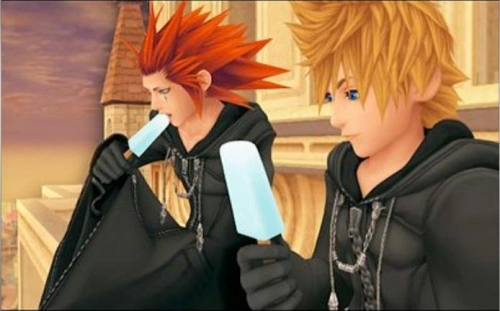 |
| And they barely get to eat any ice cream. |
Here I must address something that will make absolutely no sense to someone who has never played a Kingdom Hearts game, and has now begun even to make less sense to me: the game’s use of the heart. Hearts (sort of magical stand-ins for the soul), darkness, light, and friendship feature heavily in the Kingdom Hearts series. But now that I have played Kingdom Hearts 3, I’m not entirely sure what a heart is anymore. The game gives the heart so many abilities that it can overwhelm uninitiated players. At times, it can feel like the catch-all solution for the writers, as players encounter situations such as hearts living inside of other hearts and awakening at just the right time. The game gives so much power to the heart without properly explaining what that entails or what the boundaries are for hearts that it had lost me entirely by the end. I began to write off plot points I didn’t understand as, “That was his heart doing... something.”
Kingdom Hearts 3 also completely eliminates Final Fantasy characters from the game, despite their presence in prior games (Kingdom Hearts began as a sort of Disney/Final Fantasy hybrid). The game’s director said this was intentional, as he felt that the game’s characters could stand on their own now and didn’t need support from Final Fantasy characters. The problem with this is that those Final Fantasy characters are still part of the story, and the game is still lacking in certain areas without them. I enjoyed learning more about the keyblade from Leon and Yuffie in Kingdom Hearts 1. I enjoyed battling Sephiroth and talking to Cloud in both Kingdom Hearts 1 and 2. All of this (and more) is gone in this game. While the game’s director may have felt that his characters didn’t need support from Final Fantasy characters, eliminating several important cast members makes the game feel emptier.
Kingdom Hearts 3 also completely eliminates Final Fantasy characters from the game, despite their presence in prior games (Kingdom Hearts began as a sort of Disney/Final Fantasy hybrid). The game’s director said this was intentional, as he felt that the game’s characters could stand on their own now and didn’t need support from Final Fantasy characters. The problem with this is that those Final Fantasy characters are still part of the story, and the game is still lacking in certain areas without them. I enjoyed learning more about the keyblade from Leon and Yuffie in Kingdom Hearts 1. I enjoyed battling Sephiroth and talking to Cloud in both Kingdom Hearts 1 and 2. All of this (and more) is gone in this game. While the game’s director may have felt that his characters didn’t need support from Final Fantasy characters, eliminating several important cast members makes the game feel emptier.
 |
| To be fair, what game wouldn't feel emptier without this guy? |
Despite all of my criticisms, I must admit that Kingdom Hearts 3 did begin to redeem itself as I approached the end, the source of most of the good things I can say about it. The final world is the game’s high point. It felt good to finally fight many of the members of Organization XIII (one main group of antagonists) that had been taunting me throughout the game. The fights come in a boss-rush mode of sorts, a greater challenge than the rest of the game. You also get to team up with a variety of new characters. While fighting alongside Donald and Goofy isn’t bad, I enjoyed the variety, as I could interact further with some of the characters that I wanted to hear more from. There were even a few fleeting moments when the game began to evoke that familiar sense of connection I had with these characters in past games.
Another high point in Kingdom Hearts 3 is the music. The entire series has always had phenomenal music, and this game is no exception. The game opens with a beautiful new remix of “Dearly Beloved” and it never stops from there. Once again, the music truly shines at the end of the game, when Sora finally gets to the worlds that are unique to Kingdom Hearts 3. These original compositions are among the best in the series. Many of the songs will burrow themselves into your skull, and you’ll be looking them up on YouTube months after you’ve finished playing the game.
Another high point in Kingdom Hearts 3 is the music. The entire series has always had phenomenal music, and this game is no exception. The game opens with a beautiful new remix of “Dearly Beloved” and it never stops from there. Once again, the music truly shines at the end of the game, when Sora finally gets to the worlds that are unique to Kingdom Hearts 3. These original compositions are among the best in the series. Many of the songs will burrow themselves into your skull, and you’ll be looking them up on YouTube months after you’ve finished playing the game.
As I look back on Kingdom Hearts 3, I almost feel like an angry father saying, “I’m not mad, just disappointed.” The game had potential to be great, but much of that potential was wasted on an incomprehensible plot and Disney fan service. Kingdom Hearts 1 and 2 had a different feel from the third. There isn’t one significant issue that I can point to and say, “This is why Kingdom Hearts 3 pales in comparison.” Instead, it’s a series of seemingly minor decisions that add up to a cumulatively worse game. While some may enjoy this game, I found it to be bland and lacking personality. If I had not played the past games in the series as a child, I don’t think I would have even finished it. Simply put, Kingdom Hearts 3 is average at best. And--much as it pains me to say--there are much better RPGs available elsewhere.
4/10
4/10
